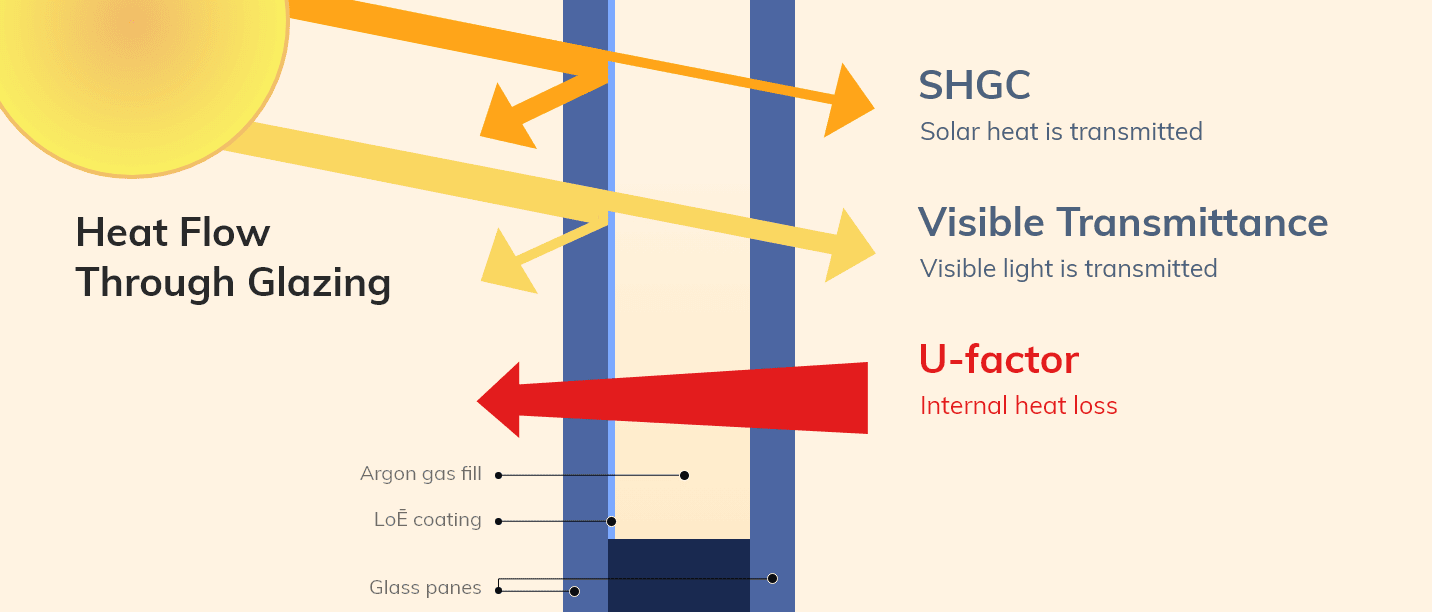Solar Heat Gain Coefficient
Last Updated: July 31, 2024
Share Article
Solar Heat Gain Coefficient
Solar Heat Gain Coefficient
Solar Heat Gain Coefficient (SHGC) signifies the fraction of solar radiation that passes through a window, either transmitted directly and/or absorbed, and subsequently released inward. Represented as a value between 0 (least solar heat gain) and 1 (maximum solar heat gain), a lower SHGC means the window allows less solar heat into the home.

Figure: Solar and thermal heat transfer
For residential low-E (low emissivity) glass selection, measuring SHGC is important. Cardinal’s LoĒ™ coatings, tailored to reflect infrared light while admitting visible light, modulate the SHGC of the glass. Depending on a home’s architectural orientation, regional climate, and heating and cooling requirements, the right SHGC can optimize energy efficiency. In warmer climates, a lower SHGC helps reduce air conditioning costs by limiting solar heat entry, while in cooler regions, a higher SHGC can potentially be advantageous by harnessing the sun’s warmth with the correct passive design considerations of the home. Thus, understanding SHGC is essential in selecting the optimal LoĒ glass for a home’s unique needs, ensuring comfort while promoting heating and cooling savings.
More:
Related Glossary Entries:


